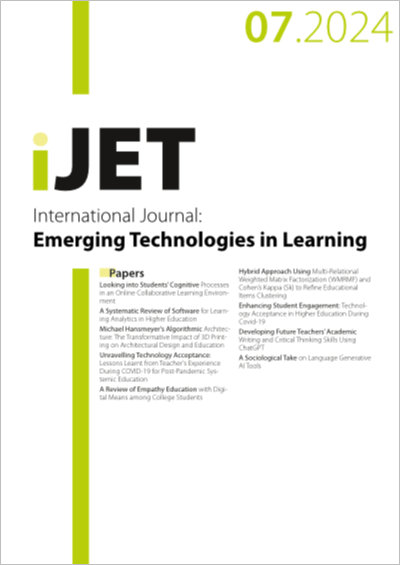Michael Hansmeyer's Algorithmic Architecture: The Transformative Impact of 3D Printing on Architectural Design and Education
DOI:
https://doi.org/10.3991/ijet.v19i07.50845Keywords:
Hansmeyer's 3D printing, cultural impact of architectural 3D printing, 3D printing in education, social impact of 3D printing, architectural innovationAbstract
This study examines how 3D printing and computational design alter traditional architecture, focusing mainly on Michael Hansmeyer’s architectural concepts. The study’s main challenge is understanding how digital technologies have changed architectural practices. This study aims to clarify how additive manufacturing and algorithmic design can revolutionize traditional construction methods and architectural design concepts. This study’s foundation was a thorough examination of scholarly journals, books, and conference proceedings that discuss the intersection of 3D printing and computational design in the architectural discipline. However, the study’s distinctive significance comes from the interview with Hansmeyer rather than analyzing the body of previous material. The study’s objectives include promoting sustainable practices, enabling customization, and increasing design complexity. This study aims to forecast the future role of digital fabrication in architecture, highlight the reinvention of architectural education, and push the creative frontiers of the field.
Downloads
Published
How to Cite
Issue
Section
License
Copyright (c) 2024 Susana Fernández Blanco, Javier Alonso Madrid

This work is licensed under a Creative Commons Attribution 4.0 International License.



